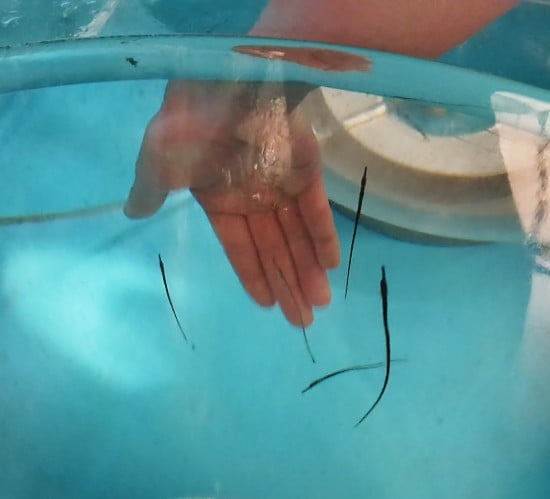
Keepers at Bristol Aquarium are celebrating the arrival of dozens of baby pipefish following an unexpected breeding boom.
More than 50 tiny, five-centimetre-long broadnose pipefish babies have already been born at the Harbourside attraction with potentially hundreds more due imminently.
The newborns are being looked after in one of the aquarium’s special nursery displays and in the quarantine breeding area.

Pipefish are closely related to seahorses and, like them, it is the male that incubates the eggs and gives birth to the young. Rows of eggs are laid by the female onto a special pad on the male’s belly, and here the eggs develop.
Bristol Aquarium’s Olivia Orchart said: “This is one of two native species of pipefish we look after here at the aquarium.
“We have 12 adults, of which two are due to give birth any time now and several others are showing clear signs of being pregnant.
“Each male can give birth to up to 200 young so we could well be in for a real baby boom over the coming weeks.
“When they hatch the babies are identical miniature versions of their parents, only a fraction of the size,” she added.
The young are born free swimming with relatively little or no yolk sac, and begin feeding immediately. From the time they hatch they are totally independent.
Pipefish feed on small crustaceans such as mysid shrimps and tiny creatures called copepods. An adult greater pipefish needs to eat several hundred tiny shrimps in one day.
UK waters are home to six different species of pipefish and two species of seahorse.
In the wild pipefish live in relatively shallow waters over sandy seabeds or rough ground among seaweed and eel grasses.
Like seahorses, pipefish are extremely slow moving fish and have developed a hard, armour-like outer skeleton to help protect them against would-be predators.
They are often present in rockpools although their seaweed-like bodies mean they are extremely well camouflaged and easily overlooked.
Issued by Bristol Aquarium. For more information please contact David Waines or Olivia Orchart on 0117 929 8929.
Special Delivery as Male Pipefish Gives Birth
Comments are closed.
